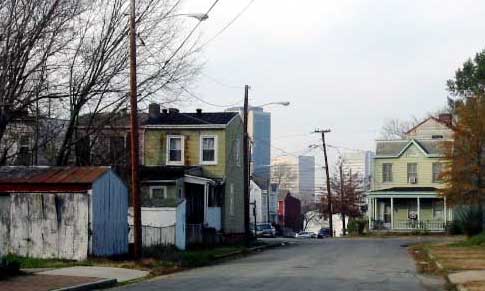
For many Americans, keeping the lights on at home isn’t a given. It’s a stressful monthly calculus that might involve painful tradeoffs and costly loans.
In Virginia, the math can be especially punishing. Average home electric bills in the state are the 10th highest in the country. Electricity burden—the percentage of income spent on power bills—is higher than average, too. And those who seek a payday loan to handle those bills will pay three times what they might in other states.
The Virginia Poverty Law Center (VPLC) has long sought to fix the state’s predatory lending problem. Recently, the group’s work on that issue led it to a separate but related fight for fairness on electric bills, challenging the utility Dominion Energy in its attempt to boost its profits at the expense of consumers.
VPLC’s Dana Wiggins talks to people on a daily basis about why they end up turning to predatory loans. Most of the time, it isn’t emergencies that drive people to submit to loans with interest rates that can soar upwards of 250 percent. Instead, it’s about making ends meet on the daily necessities.
“Utilities are a very important piece of the pie for many people,” says Wiggins, director of the group’s Center for Community Outreach and its Affordable Clean Energy Project. “A $500 loan might only make up part of someone‘s rent, but it certainly could cover their utility costs for a month.”
The more she heard about the expenses that spark this kind of borrowing, the more Wiggins saw an opportunity to act.
“I realized there was so much outsized influence on behalf of utilities,” she says. “It didn’t seem like there was a lot of discussion around the effects on everyday customers—especially low-income customers.”
In July 2019, Dominion sought to increase its rate of return on common equity—or the profit margin the utility can command for shareholders—from 9.2 percent to 10.75 percent. Those returns are collected via “rate adjustment clauses” on customer bills, and those clauses are one of the reasons Virginians’ power costs are so high. A typical 1,000 kilowatt-hour Dominion residential bill went up 30 percent from 2006 to 2016, VPLC showed in a recent analysis—an increase of more than $26 per month or more than $300 per year. Of the bill increases between 2007 and 2012, rate adjustment clauses for new generation accounted for 42 percent.
“For VLPC, this was our inaugural moment to actually jump into a rate case,” Wiggins says. “The lack of accountability on the shareholder side showed us that there need to be advocates in this space.”
VPLC had been submitting public comments in such cases, but it hadn’t officially intervened in one since the 1980s. By formally joining the proceeding, she says, VPLC got a seat at the table that it hadn’t had before. Other allies arguing against the rate increase included Walmart, the U.S. Navy, and the Virginia Office of the Attorney General’s Division of Consumer Counsel.
In its post-hearing brief, VPLC argued Dominion’s requested rate hike was “clearly excessive and would result in unnecessary rate and bill increases for the low-income customers Dominion represents.” The utility’s rate should actually be reduced, the center argued. Staff at the Virginia State Corporation Commission echoed that argument, also recommending to reduce Dominion’s rate as low as 8.1 percent.
Ultimately, the commission rejected Dominion’s rate hike request, citing it was not “consistent with the public interest” and holding the utility’s profit margin at 9.2 percent. The ruling will safeguard Virginia’s most vulnerable electric customers from further bill hikes they simply cannot afford. And it affirms the critical role of advocates like VPLC that represent the views of low-income Virginians.
“This is just the beginning,” Wiggins says of VPLC’s involvement in these kinds of cases. In the future, the goal will be “to intervene where we think it will make a difference for low-income utility customers.”

“Supporting the work of VPLC to reduce Virginians’ energy burdens and expand energy efficiency and other programs that can help alleviate those burdens has been an important step for us as a funder,” says Jennifer Bumgarner, Energy Foundation’s Senior Regional Director, Southeast. “We think a lot in our day-to-day work about carbon emissions and clean energy markets, but sometimes lose sight of how they connect to real people. Not only has VPLC been a highly effective grantee, they also are a great partner in thinking about how we can harness clean energy and carbon reduction to make people’s lives better—especially those who may be struggling to make ends meet.

